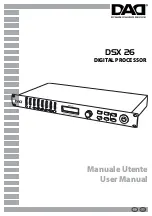
Introduction
922
SPRUH82C – April 2013 – Revised September 2016
Copyright © 2013–2016, Texas Instruments Incorporated
General-Purpose Input/Output (GPIO)
20.1 Introduction
20.1.1 Purpose of the Peripheral
Most system-on-chip (SoC) devices require some general-purpose input/output (GPIO) functionality in
order to interact with other components in the system using low-speed interface pins. The control and use
of the GPIO capability on this device is grouped together in the GPIO peripheral and is described in the
following sections.
20.1.2 Features
The GPIO peripheral consists of the following features.
•
Output set/clear functionality through separate data set and clear registers allows multiple software
processes to control GPIO signals without critical section protection.
•
Set/clear functionality through writing to a single output data register is also supported.
•
Separate input/output registers
–
Output register can be read to reflect output drive status.
–
Input register can be read to reflect pin status.
•
All GPIO signals can be used as interrupt sources with configurable edge detection.
•
All GPIO signals can be used to generate events to the EDMA.
20.1.3 Functional Block Diagram
shows a block diagram of the GPIO peripheral.
20.1.4 Industry Standard(s) Compliance Statement
The GPIO peripheral connects to external devices. While it is possible that the software implements some
standard connectivity protocol over GPIO, the GPIO peripheral itself is not compliant with any such
standards.
















































